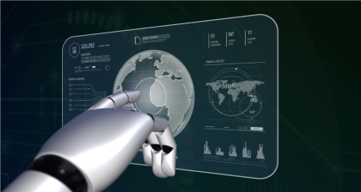Augmented Reality (AR) and Virtual Reality (VR) are emerging technologies with huge potential to change the way we interact using information, visualization and interaction. This is applicable for both consumer and enterprise use cases. Mixed Reality (MR) is a combination of AR and VR, merges images with existing real-world objects to augment or enhance a user’s experience. Add to this confusion, another terminology Extended Reality (XR). widely used which refer to all types of reality – AR, VR and MR.
Internet of Things (IoT) is an intersection of Physical and Digital, hence it is also referred to as Cyber-Physical System. When complimented with XR, IoT can result in more innovative, highly immersive experience.
This is where everything gets blurred, not able to connect the technologies to the application and use cases. In this writeup I have tried to interpret the different XR technologies with examples and how IoT can complement and augment the experiences. This writeup does not cover in depth the specific technology challenges nor the enterprise use cases.
Exploring the spectrum of reality
On one end of the spectrum there is reality that is closer to the physical world, to the extreme end of this is the virtual world which is complete simulated away from reality. For a long time Virtual Reality was existing in the form of games, flight simulators, and so on. The diagram below depicts the Reality spectrum from Real to Virtual.
AR technology is about super-imposing the data from real world onto a real world objects, for eg., eyewear application for trialing different glasses. VR technology is about illusion and synthesized information and environment, example gaming.
As the technology matured especially powerful processors, GPUs, display and more importantly head mount display and the explosion of mobile virtual reality experience became more interactive and immersive.
To understand this better, the following table will probably clarify the different Reality technology and their differences, its scope.
| Type of Reality | Use case examples |
| Augmented Reality | Used to augment real world with rich data and insights.
|
| Virtual Reality | Predominantly used in gaming and training. Target base is mostly consumer and entertainment.
|
| Augmented Virtuality | Training and entertainment is the primary application.
|
Augmenting XR with IoT
With Internet of Things (IoT) the lines are blurring between digital and physical. With the advancement in sensor and connectivity technology along with cost reduction, it is feasible and viable to engineer smart connected product. What this will enable is to get the real-time data from the physical systems augmenting and amplifying the XR immersive experience. The diagram below captures the intersection of IoT with Real and Virtual ecosystem.
The table below explains how IoT technology can augment and amplify the AR-VR experience.
| Mode of Reality | Enhanced by IoT | Use cases |
| Augmented Reality |
|
|
| Virtual Reality |
|
|
| Augmented Virtuality |
|
|
The three senses that are leveraged for rendering an immersive XR experience are Vision, Audio and Touch.
- Vision – The visual rendering can be done using Mobile, Desktop, Projector Display, Video See through Display, head mounted display (also referred as Head-Up Display, HUD) and holographic rendering. Some of the popular head mounted display are Oculus, HTC Vive, Realware, and so on. The head mounted display restricts the free movement and also causes cybersickness due to occlusion and prolonged viewing
- Audio – Similar to head mounted display, airpod/earbuds are used for rendering spatial audio sometime in 3D space. Head and body movement monitored using accelerometer and gyroscope is used to render the contextualized spatial audio. Dolby Atmos is one such technology standard. Apple Spatial Audio, Sony 360, Sony PS5 with pulse 3D wireless headset are some of the products.
- Touch – Simulated feel is rendered using haptic technology and devices. Closed loop mechanism provides feedback using actuators feeding vibration and synthetic touch. Phantom Omni from Delft Haptics lab and TouchX from 3DSystems are some of the popular Haptic devices.
Summary
What is the status of the various XR technology and what does the industry trend shows ? Gartner (Source: https://twitter.com/SkarredGhost/status/1396549995621273603/photo/1) Hype Cycle has been tracking the maturity of the AR and VR technology over the years. This diagram below captures only the AR/VR technology in the cycle. The VR has seen in the “slope of enlightenment”, however the AR is still in the “Trough of disillusionment”.

There are multiple market research and statistics about the growth of AR/VR handset and devices. According to a report from tech market research firm IDC (https://www.idc.com/promo/arvr), AR and VR headset shipments will reach 9.7 million units by the end of 2021 and are expected to grow to 32.8 million units by 2025 with a compound annual growth rate (CAGR) of 45.9%. These are customized AR/VR devices and excludes the mobile phones, tablets that already render AR/VR.
Finally to summarize, there is a lot of scope of scaling up of use cases especially in the enterprise. In the manufacturing domain AR can improve the operations, training, service management. While there is lot of advancement in the IoT to get the data from the machines, the AR technology around display has to improve. VR has seen more adoption in enterprises for training, simulation, design, construction and many more. With advancement in display, resulting in reduced cybersickness and improved mobility, Richer data with IoT, especially spatial and temporal data, closed loop through actuator control, AR/VR will see large scale growth in enterprises.











